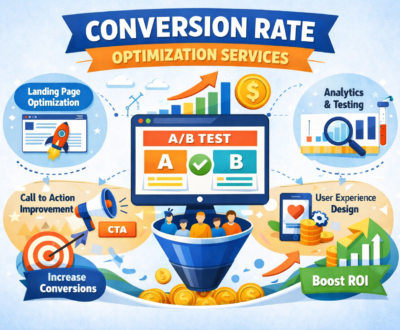Semantic SEO: Decode Google’s Ranking Formula
- July 17, 2025

In the ever-evolving landscape of digital marketing and search engine optimization, semantic SEO has emerged as a game-changing strategy that’s revolutionizing how websites rank on Google. As search engines become increasingly sophisticated in understanding user intent and context, businesses must adapt their SEO strategies to align with these semantic search algorithms. This comprehensive guide explores how semantic SEO impacts Google rankings and why it’s crucial for modern digital marketing success.
Understanding Semantic SEO: Beyond Keywords
Semantic SEO represents a fundamental shift from traditional keyword-focused optimization to a more nuanced approach that prioritizes meaning, context, and user intent. Unlike conventional SEO practices that relied heavily on exact-match keywords, semantic SEO focuses on understanding the relationships between words, concepts, and topics to deliver more relevant search results.
Google’s sophisticated algorithms now analyze the semantic meaning behind search queries, considering factors like synonyms, related terms, and contextual relevance. This evolution means that search engines can better understand what users are actually looking for, even when they use different words or phrases than what appears on a webpage.
How Google’s Semantic Search Algorithms Work
Google’s semantic search capabilities have been enhanced through several major algorithm updates, including RankBrain, BERT, and MUM (Multitask Unified Model). These systems use natural language processing and machine learning to interpret search queries more accurately and match them with the most relevant content.
The search engine now considers:
- Entity recognition: Identifying people, places, things, and concepts within content
- Topic clustering: Understanding how different pieces of content relate to broader themes
- Context analysis: Interpreting the meaning of ambiguous terms based on surrounding content
- User intent classification: Determining whether users want information, want to make a purchase, or seek navigation
Key Components of Semantic SEO Strategy
Implementing semantic SEO requires a strategic approach that goes beyond traditional keyword optimization. The following components form the foundation of effective semantic SEO implementation:
Topic Authority and Content Depth
Building topic authority involves creating comprehensive, in-depth content that covers all aspects of a subject. Rather than targeting individual keywords, successful semantic SEO strategies focus on developing content clusters around core topics. This approach demonstrates expertise and helps search engines understand your website’s authority in specific subject areas.
Structured Data Implementation
Structured data markup plays a crucial role in semantic SEO by providing search engines with explicit information about your content’s meaning. Schema markup helps Google understand entities, relationships, and context, making your content more likely to appear in rich snippets and knowledge graphs.
Natural Language Optimization
Modern content optimization prioritizes natural language patterns over keyword stuffing. This includes using conversational phrases, long-tail keywords, and question-based queries that mirror how people actually search. Voice search optimization has become particularly important as more users rely on voice assistants for information.
The Impact on Google Rankings
Semantic SEO significantly influences Google rankings through several mechanisms:
Enhanced Relevance Scoring
Google’s semantic understanding allows it to match content with user intent more accurately. Pages that comprehensively address user needs and provide contextually relevant information tend to rank higher than those optimized for specific keywords without considering semantic relationships.
Featured Snippets and Rich Results
Semantic SEO optimization increases the likelihood of achieving featured snippets, knowledge panels, and other rich results. These prominent search features often capture significant click-through rates and establish authority in your field.
Long-tail Keyword Performance
Semantic SEO naturally improves rankings for long-tail keywords and related terms. By focusing on comprehensive topic coverage, your content becomes relevant for numerous related searches without explicitly targeting each variation.
Implementing Semantic SEO Best Practices
Successfully implementing semantic SEO requires a comprehensive approach that combines technical optimization with content strategy. Here are the essential practices for effective semantic SEO implementation:
Content Strategy Development
Develop content strategies that prioritize topic clusters over individual keywords. Create pillar pages that comprehensively cover broad topics, supported by cluster content that addresses specific subtopics. This internal linking strategy helps search engines understand your site’s topical authority.
User Intent Optimization
Research and understand the different types of user intent behind search queries. Create content that addresses informational, navigational, transactional, and commercial investigation intents. This comprehensive approach ensures your content meets users’ needs at different stages of their journey.
Technical SEO Considerations
Implement technical SEO best practices that support semantic search, including:
- Clean URL structures that reflect content hierarchy
- Proper heading tag usage that creates logical content structure
- Internal linking strategies that connect related topics
- Mobile optimization for voice search compatibility
Measuring Semantic SEO Success
Tracking the effectiveness of your semantic SEO efforts requires monitoring specific metrics that reflect semantic search performance. Understanding these key performance indicators helps optimize your strategy for better results:
Key Performance Indicators
Track metrics that reflect semantic SEO effectiveness:
- Organic traffic growth for topic-related keywords
- Featured snippet acquisitions across various queries
- Click-through rates from search results
- Dwell time and engagement metrics
- Rankings for long-tail keywords and semantic variations
Tools and Analytics
Utilize SEO tools that provide insights into semantic search performance. Google Search Console, SEMrush, Ahrefs, and other platforms offer features for tracking topic authority, content gaps, and semantic keyword opportunities.
The Future of Semantic SEO
As artificial intelligence and machine learning continue to advance, semantic SEO will become even more critical for search success. Google’s ongoing improvements in understanding context, user intent, and content quality mean that businesses must prioritize comprehensive, user-focused content strategies.
The integration of voice search, visual search, and conversational AI will further emphasize the importance of semantic optimization. Businesses that invest in semantic SEO now will be better positioned to adapt to future search engine developments and maintain competitive advantages in organic search results.
Conclusion
Semantic SEO represents the future of search engine optimization, moving beyond traditional keyword-focused strategies to embrace context, meaning, and user intent. By implementing comprehensive semantic SEO practices, businesses can improve their Google rankings, increase organic traffic, and provide better user experiences.
Success in semantic SEO requires a holistic approach that combines technical optimization, content strategy, and user experience design. As search engines continue to evolve, those who master semantic SEO principles will maintain competitive advantages in the digital marketplace.
FAQs
Semantic SEO focuses on meaning and user intent, not just keywords. It emphasizes context, relevance, and topic coverage over keyword density.
Google’s algorithms like BERT and RankBrain reward content that deeply understands and satisfies user intent, boosting rankings for contextually relevant pages.
Key elements include topic clusters, schema markup, natural language, topical authority, voice search readiness, and mobile optimization.
Create in-depth content, use natural phrasing, add schema, interlink related topics, and focus on answering user questions clearly.
Yes, semantic SEO helps connect local queries with relevant businesses even without exact location terms, boosting local visibility.









